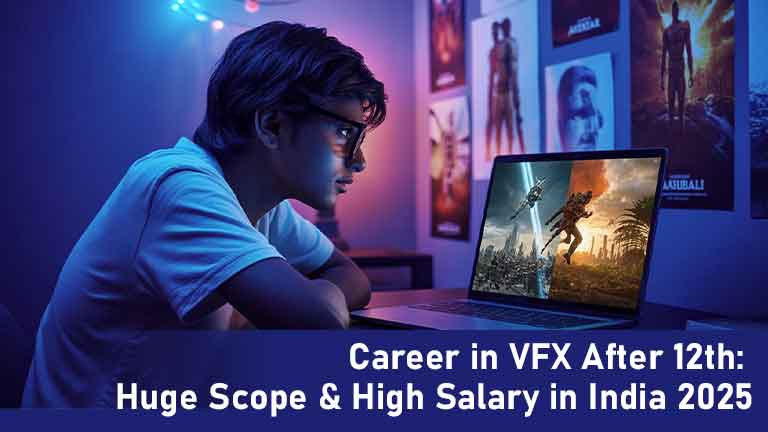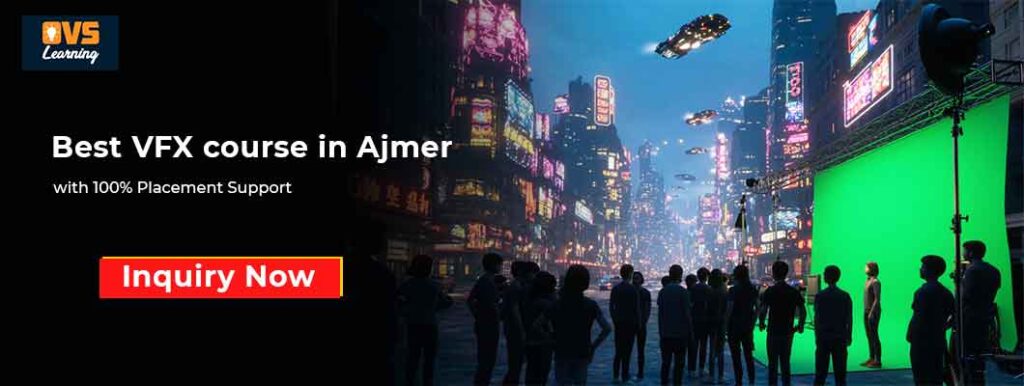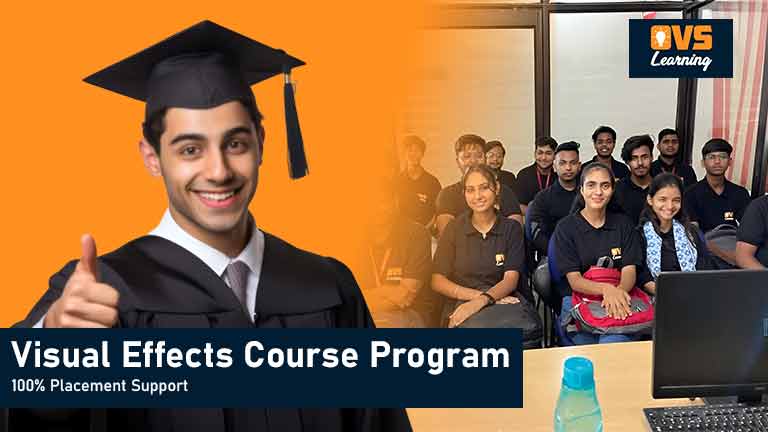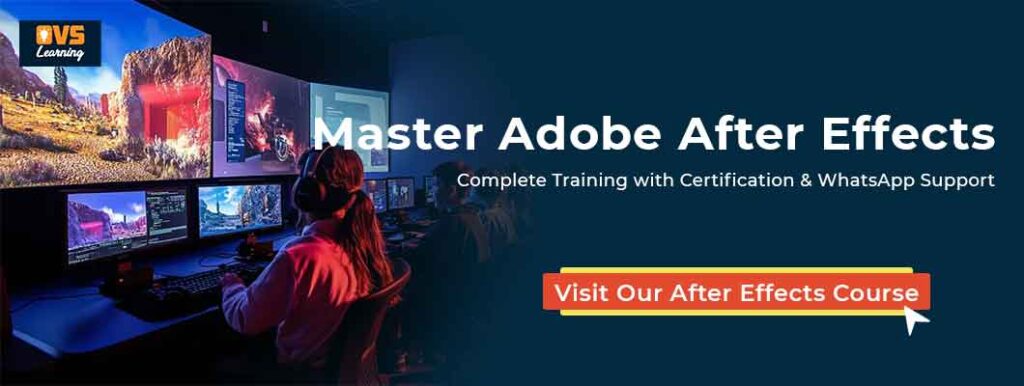
Career in VFX After 12th: Huge Scope & High Salary in India 2025
Why I Chose VFX as a Career (And Why You Might Too)
Let me tell you the moment that flipped my life.
I was just another student back then—scrolling through reels, bored with regular classes. Then one day, I walked into a theatre. Huge screen. Loud speakers. Dragons flying, cities burning, explosions everywhere… but none of it was real. Still, it felt like I was in that world.
That was VFX. That was the moment I thought—“I don’t just wanna watch stories… I wanna build them.”
A Career in VFX After 12th isn’t some boring desk job. It’s your ticket to the world of movies, games, virtual reality—even futuristic tech like the metaverse. It’s where creativity meets software. Where art meets career. And guess what? You don’t need to crack IIT or be a science genius.
If you’re someone who loves storytelling, editing, fantasy, gaming—or even just curious how those epic scenes are made—then this field is for you.
What you do need? A spark. A creative brain. And the right training. That’s it.
Choosing a career in VFX after 12th is like unlocking a portal… to studios, film sets, animation labs, gaming firms, and more. It’s not just about animation, it’s about imagination. And if you’re serious about it, there’s a whole industry out there ready to hire people just like you.

What is VFX (Visual Effects)?
VFX, or Visual Effects, is all about creating or editing images that normal cameras just can’t catch. It’s using cool stuff like CGI, green screens, rotoscoping, and 3D animation to make those crazy visuals you see in movies and games. Without VFX? Well, lots of those epic scenes you love wouldn’t even exist.
Thinking of a Career in VFX After 12th? Now’s a great time to jump in. Got creativity? Some tech skills? You’re good to go. You can work on awesome projects in films, gaming, and more!
Take movies like Avengers, Avatar, Kalki, or Baahubali. Honestly, none of those jaw-dropping scenes would be possible without VFX. It’s like the secret sauce behind all the magic on screen. No kidding!

Can I Start a Career in VFX After 12th?
Absolutely, yes!
A Career in VFX After 12th has become easier to start than ever before. No matter which stream you’re from—science, commerce, or arts—you can jump into this exciting field. Most courses just need you to have passed 12th, know the basics of computers, and most importantly, have a real passion for creating visuals.
Places like OVS Learning in Ajmer offer courses that start from the basics and slowly take you to advanced levels. They focus on getting you ready for actual studio jobs, so you’re not just learning theory but real skills you can use in the industry.
The Demand for VFX in 2025 and Beyond
If you’re wondering whether this is a safe bet career-wise, here’s the truth:
- The global VFX industry is expected to cross $30 billion by 2026.
- India is now a major outsourcing hub for Hollywood, Netflix, gaming, and advertising industries.
- OTT platforms and gaming studios are hiring VFX artists faster than ever.
A Career in VFX After 12th is not just about getting a job. It’s about being future-proof.

Career in VFX After 12th: Popular Job Roles & Salary
After completing a professional VFX course, here are the major job profiles you can target:
1. Compositor
What they actually do:
Ever seen a superhero flying through a city or a dinosaur in a jungle? That’s not one single shot—it’s a mix of green screen footage, CG backgrounds, particles, and lighting. And the person who brings all that together like magic? That’s the Compositor.
They basically take all the layers—live-action, 3D renders, special effects, and more—and blend them into one perfect shot. No harsh lines. No weird lighting. Everything should feel like it was shot together. That’s the goal.
Salary:
If you’re just starting out, expect around ₹3 to ₹6 LPA in India. But with good skills and some experience under your belt, that number can jump real quick. Top VFX houses in Mumbai, Pune, and Bangalore pay even more.
And yeah, if you’re good… like really good… international freelance gigs are a thing. 😉
2. Roto Artist
What they actually do:
Okay, imagine a scene where a person is walking in front of a green screen, and you need to replace that background with something wild—like a burning city or an alien spaceship. But before adding effects, you gotta cut out that person from each frame. That’s what a Roto Artist does.
They trace objects or people in every single frame. One by one. Yup, frame by frame. Super detailed. Super important. It’s like digital scissors work—but way cooler and way more technical.
A lot of people think this is “basic work,” but honestly, bad roto can ruin a whole VFX scene. Clean edges, smooth movement—this is what makes the final shot believable.
Salary:
As a fresher, most Roto Artists in India earn between ₹2.5 to ₹5 LPA. But once you get the flow, and if your eye for detail is solid, you can move up fast. Some even shift into compositing after a while, where the pay and creative freedom both increase.
It’s also a great entry point if you wanna step into the VFX world right after your 12th.

3. 3D Animator
What they actually do:
3D Animators are the real magicians behind those moving characters you see in animated films, games, or even ads. They don’t just move models—they give them emotions, timing, expressions… life.
You know when a dragon blinks before roaring or a cartoon kid trips and laughs? That’s all animated frame by frame using tools like Maya or Blender. It’s not just about movement—it’s about acting through a screen. And trust me, it’s not easy, but super satisfying when done right.
If you’re someone who loves stories, gestures, and that little spark in characters’ eyes—3D animation might just be your thing.
Salary:
Freshers usually start with around ₹4 to ₹7 LPA, depending on the studio and your skillset. Big production houses or gaming studios might pay more if your reel stands out.
With experience and a good showreel, that number keeps going up. And if you nail character animation? Studios abroad keep an eye on artists like that.
4. Matchmove Artist
What they actually do:
Ever seen a CG robot walk perfectly in sync with live-action footage? Or a 3D spaceship fly through a real city street like it belongs there? That’s matchmoving in action.
A Matchmove Artist takes the real camera footage and figures out the movement of that camera—its angles, zooms, pans, all of it. Then, they recreate that exact motion inside a 3D software so that all the computer-generated stuff (like creatures, buildings, or cars) fits in perfectly.
Think of it like syncing the real world with the virtual one. If matchmove is off, everything looks fake. But if it’s spot on? Magic. The CG blends right in.
This job is technical. You’ll need patience, problem-solving, and sharp eyes for details. But once you get it, it’s actually super fun and satisfying.
Salary:
For freshers, the pay usually falls between ₹3.5 to ₹6.5 LPA. It depends a lot on your accuracy and speed. Once you build a reputation for clean tracks and reliable work, there’s scope to earn more—or even step up to layout or camera tracking lead roles.
Matchmove is also a great stepping stone into higher VFX positions.

5. FX Artist
What they do:
This one’s for the chaos lovers 😎
FX (or effects) artists are the ones who bring the boom to the screen—literally. Fire, smoke, rain, snowfall, magic spells, destruction, explosions… all those epic moments in films or games? That’s the FX artist’s job.
But hey, it’s not just about making things look cool. It’s about realism, timing, and physics. You create stuff that feels alive—like water splashing just right, or dust rising as a dragon lands.
You’ll use tools like Houdini, Maya, and RealFlow, and yeah, it can be technical. Simulations take time, and crashing your software is just part of the day 😅 But when you finally see your explosion on the big screen? Worth it.
Salary:
Freshers usually start around ₹5 LPA, and with good showreel pieces and software command, you can hit ₹10 LPA in just a few years. Some FX artists working on international projects or with top VFX studios earn much more.
So, if you’ve got patience, love playing with particles, and don’t mind your system freezing once in a while—FX is your jam.
6. Lighting Artist
What they do:
Okay, so imagine this – you’ve got a beautifully modeled scene. Killer textures. Perfect animation. But something still feels off. Flat. Dull.
That’s where the lighting artist steps in.
These folks are like the cinematographers of the CG world. They decide how the light falls, where the shadows hit, how warm or cold the scene feels. Whether it’s a spooky forest at night or a cozy kitchen in the morning, the mood totally depends on the lighting.
And no, it’s not just about placing a few digital lights and calling it a day. You need to understand color theory, shadows, bounce light, reflections, and how different materials react to different lights. It’s artistic and technical.
Tools? You’ll mostly use Maya, Arnold, Redshift, or V-Ray – all solid stuff.
Salary:
As a fresher, you can expect somewhere between ₹4.5 to ₹6 LPA. But if your lighting makes scenes feel alive (and if you’ve got a solid portfolio), you can push that to ₹8 LPA or more in a few years. Some lighting artists working on web series and films even go freelance and earn more per project.
So yeah—if you’ve got an eye for mood, atmosphere, and those cinematic vibes… lighting might just be your thing. 🎬💡

7. Pre-visualization (Previs) Artist
What they do:
Previs artists are like the “planners” of the VFX world. Before the real shoot even starts, they step in and build a rough animated version of how a scene should look. Think of it like a sketch, but in 3D.
Big-budget films, action-heavy sequences, or complex VFX shots? They all need planning. Directors can’t just wing it on set. So, the previs artist helps map out camera angles, character movements, effects timing, scene composition—basically the blueprint for the final shot.
It doesn’t have to be perfect or detailed. Just good enough to guide the team. Kinda like saying: “Hey, here’s what we’re trying to do.”
Most previs work is done using tools like Maya, Blender, or 3ds Max, sometimes even with game engines like Unreal for real-time previews.
Salary:
Starting off, you might earn around ₹3 LPA, and with a bit of experience and a solid grip on camera movements and storyboarding, it can rise to ₹5.5 LPA or even more. Studios love previs artists who think cinematically.
So if you like planning, visualizing things before they exist, and working close with directors or creative heads—previs might just be your sweet spot.
8. Motion Graphics Designer
What they do:
You’ve definitely seen their work—even if you didn’t realize it. From Instagram ads to YouTube intros, from flashy title sequences to animated explainers on websites… yup, that’s all motion graphics.
A motion graphics designer mixes animation, text, shapes, and sometimes audio to tell quick, punchy stories. It’s not full-on character animation like in movies—but it’s fast, bold, and everywhere in digital media.
They design the kind of stuff that grabs attention in the first three seconds. You know, the stuff that makes you pause your scroll.
Tools? You’ll mostly use Adobe After Effects, Illustrator, Photoshop, and sometimes Cinema 4D or Element 3D. A bit of sound design knowledge helps too.
This role fits folks who enjoy both design and animation. Like—you’re not just making things move… you’re making them mean something when they do.
Salary:
Freshers in India can start around ₹4 LPA. With good skills and a slick portfolio, you can push that up to ₹6–7 LPA pretty quick. And if you freelance or work for digital agencies in metros, the pay can go higher depending on how solid your reel is.
So if you love combining text, visuals, and motion—this role’s creative, fast-paced, and honestly, in big demand right now.

Top Recruiters for VFX Talent in India
If you’re building a Career in VFX After 12th, you’d want to know where you can work. Here are the leading names hiring fresh talent:
- Prime Focus
- Red Chillies VFX
- MPC (Moving Picture Company)
- Technicolor
- DNEG
- Tata Elxsi
- Makuta VFX
- Cosmos Maya
- Green Gold Animation
- Netflix Studios India
The Role of Training Institutes in Your VFX Career
One of the smartest things I did when starting my Career in VFX After 12th was joining a solid training institute. And not just any institute – one that offered:
- Hands-on practice with top tools (After Effects, Maya, Nuke, Houdini)
- Studio-style project work
- Expert mentors from the industry
- Placement support and portfolio building
For students in Rajasthan, the best VFX course in Ajmer at OVS Learning offers all this and more.
Tools You Should Master in a VFX Career
Your toolkit matters. A lot. Here’s what you should learn:
- Adobe After Effects
- Autodesk Maya
- Nuke
- Houdini
- Blender
- Photoshop
- Premiere Pro
Mastering these will make your Career in VFX After 12th a lot more promising.

A Real Story: From 12th Pass to Studio Pro
Ritika, one of our students, joined OVS Learning after her 12th from a small town near Ajmer. No prior experience. Just passion.
In 18 months, she was hired by a Mumbai-based studio as a junior VFX artist with a package of ₹6 LPA. Her journey proves it—a Career in VFX After 12th is 100% possible with the right guidance.
Conclusion
A Career in VFX After 12th is more than just a trend. It’s a future. It’s for dreamers, doers, and digital creators. If you love visuals and storytelling, don’t wait.
Join a course. Build your showreel. Learn the tools. And grab the opportunity.
OVS Learning is here to help you make your first move. With expert faculty, placement support, and hands-on practice, we make sure your Career in VFX After 12th starts strong.
FAQs: VFX Career Options After 12th
Q1. Can I join a VFX course after 12th?
Yes, totally! Most VFX institutes in India, including OVS Learning, accept students right after 12th, no matter which stream you’re from — science, commerce, or arts. Just bring your passion, and you’re good to go.
Q2. How long is a VFX course after 12th?
Usually, the courses range from 12 to 21 months. At OVS Learning, we offer beginner to advanced level programs that fit this timeline, so you get the right skills step-by-step, plus industry-recognized certifications.
Q3. Is there good salary growth in a VFX career?
Absolutely! When you start, salary might be modest, but as you gain experience and build a strong portfolio, senior roles can easily go beyond ₹20 LPA in India. And if you work abroad, like in Canada, US, or UK, the pay can be even higher.
Q4. Which is the best VFX course in Ajmer?
We’d say OVS Learning, of course! Our VFX courses are designed with the industry in mind. We focus on real studio projects, expert trainers, and strong placement support — so you don’t just learn theory, you get job-ready.
Q5. Can I freelance or work abroad in VFX?
Yes! Many of our students start freelancing on platforms like Fiverr and Upwork right after the course. Plus, OVS Learning guides you on building a portfolio and getting international opportunities. Countries like Canada, US, and UK have great demand for skilled VFX artists.

Tag:ai courses after 12th, animation career after 12th, animation career in india, Animation Courses After 12th, best career options after 12, best courses after 12th, career after 12th, Career in Animation, career in animation after 12th, career in india, career in lockdown, career in vfx, career options after 10th, career options after 12th, courses after 12th, creative career after 12th, how to select career after 12th, vfx career in india, vfx career india



